constituent assembly of india debates (proceedings)- volume vii
constituent assembly of india debates (proceedings)- volume vii
constituent assembly of india debates (proceedings)- volume vii
Create successful ePaper yourself
Turn your PDF publications into a flip-book with our unique Google optimized e-Paper software.
members <strong>of</strong> Parliament can become Ministers. Ministers have the same rights as other members <strong>of</strong><br />
Parliament, namely, that they can sit in Parliament, take part in <strong>debates</strong> and vote in its <strong>proceedings</strong>.<br />
Both systems <strong>of</strong> Government are <strong>of</strong> course democratic and the choice between the two is not very easy.<br />
A democratic executive must satisfy two conditions - (1) It must be a stable executive and (2) it must be<br />
a responsible executive. Unfortunately it has not been possible so far to devise a system which can<br />
ensure both in equal degree. You can have a system which can give you more stability but less<br />
responsibility or you can have a system which gives you more responsibility but less stability. The<br />
American and the Swiss systems give more stability but less responsibility. The British system on the<br />
other hand gives you more responsibility but less stability. The reason for this is obvious. The American<br />
Executive is a non-Parliamentary Executive which means that it is not dependent for its existence upon a<br />
majority in the Congress, while the British system is a Parliamentary Executive which means that it is not<br />
dependent for its existence upon a majority in the Congress, while the British system is a Parliamentary<br />
Executive which means that it is dependent upon a majority in Parliament. Being a non-Parliamentary<br />
Executive, the Congress <strong>of</strong> the United States cannot dismiss the Executive. A Parliamentary Government<br />
must resign the moment it loses the confidence <strong>of</strong> a majority <strong>of</strong> the members <strong>of</strong> Parliament. Looking at it<br />
from the point <strong>of</strong> view <strong>of</strong> responsibility, a non-Parliamentary Executive being independent <strong>of</strong> Parliament<br />
tends to be less responsible to the Legislature, while a Parliamentary Executive being more dependent<br />
upon a majority in Parliament become more responsible. The Parliamentary system differs from a non-<br />
Parliamentary system in as much as the former is more responsible than the latter but they also differ as<br />
to the time and agency for assessment <strong>of</strong> their responsibility. Under the non-Parliamentary system, such<br />
as the one that exists in the U.S.A., the assessment <strong>of</strong> the responsibility <strong>of</strong> the Executive is periodic. It<br />
takes place once in two years. It is done by the Electorate. In England, where the Parliamentary system<br />
prevails, the assessment <strong>of</strong> responsibility <strong>of</strong> the Executive is both daily and periodic. The daily<br />
assessment is done by members <strong>of</strong> Parliament, through questions, Resolutions, No-confidence motions,<br />
Adjournment motions and Debates on Addresses. Periodic assessment is done by the Electorate at the<br />
time <strong>of</strong> the election which may take place every five years or earlier. The Daily assessment <strong>of</strong><br />
responsibility which is not available under the American system it is felt far more effective than the<br />
periodic assessment and far more necessary in a country like India. The Draft Constitution in<br />
recommending the Parliamentary system <strong>of</strong> Executive has preferred more responsibility to more stability.<br />
So far I have explained the form <strong>of</strong> Government under the Draft Constitution. I will now turn to the<br />
other question, namely, the form <strong>of</strong> the Constitution.<br />
Two principal forms <strong>of</strong> the Constitution are known to history - one is called Unitary and the other<br />
Federal. The two essential characteristics <strong>of</strong> a Unitary Constitution are:(1) the supremacy <strong>of</strong> the Central<br />
Polity and (2) the absence <strong>of</strong> subsidiary Sovereign polities. Contrariwise, a Federal Constitution is<br />
marked: (1) by the existence <strong>of</strong> a Central polity and subsidiary polities side by side, and (2) by each<br />
being sovereign in the field assigned to it. In other words. Federation means the establishment <strong>of</strong> a Dual<br />
Polity. The Draft Constitution is, Federal Constitution inasmuch as it establishes what may be called a<br />
Dual Polity. This Dual Polity under the proposed Constitution will consist <strong>of</strong> the Union at the Centre and<br />
the States at the periphery each endowed with sovereign powers to be exercised in the field assigned to<br />
them respectively by the Constitution. This dual polity resembles the American Constitution. The<br />
American polity is also a dual polity, one <strong>of</strong> it is known as the Federal Government and the other States<br />
which correspond respectively to the Union Government and the States Government <strong>of</strong> the Draft<br />
Constitution. Under the American Constitution the Federal Government is not a mere league <strong>of</strong> the<br />
States nor are the States administrative units or agencies <strong>of</strong> the Federal Government. In the same way<br />
the Indian Constitution proposed in the Draft Constitution is not a league <strong>of</strong> States nor are the States<br />
administrative units or agencies <strong>of</strong> the Union Government. Here, however, the similarities between the<br />
Indian and the American Constitution come to an end. The differences that distinguish them are more<br />
fundamental and glaring than the similarities between the two.<br />
The points <strong>of</strong> difference between the American Federation and the Indian Federation are mainly two.


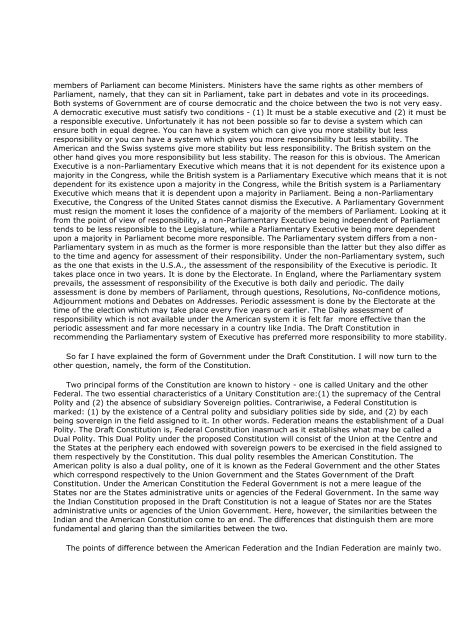
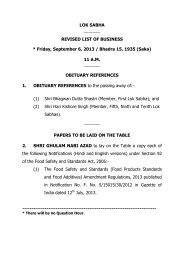
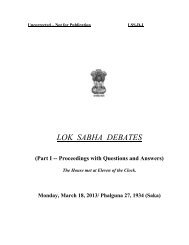

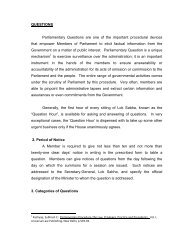
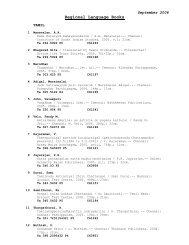

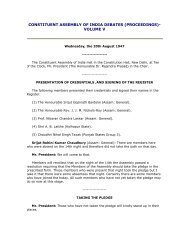

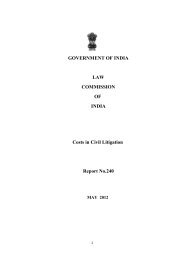
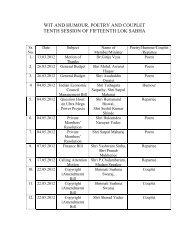
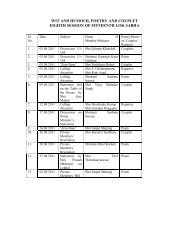

![gÉÉŌ A.]ÉŌ. xÉÉxÉÉ](https://img.yumpu.com/8015720/1/190x245/geeo-aeo-xeexee.jpg?quality=85)
